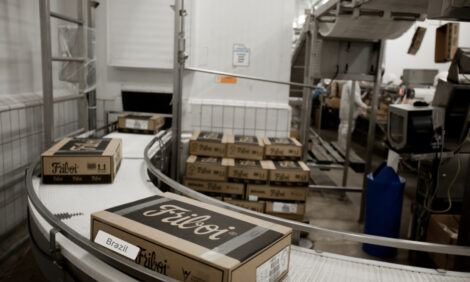



US Gives Conservation Land to Struggling Livestock
US - This week, Agriculture Secretary Tom Vilsack extended emergency use of Conservation Reserve Programme (CRP) land for North Dakota livestock producers facing losses from continued flooding.The Secretary agreed to the extension for the emergency use of the acreage due to the continued flooding-from 30 April 2009, to 15 May 2009-at the request of the North Dakota Congressional Delegation and the North Dakota Department of Agriculture. USDA also agreed to support North Dakota livestock producers by granting the state US$750,000 to help provide for livestock feed and is instituting other measures to help ranchers in the Red River Basin.
"These measures are designed to help North Dakota's producers, hit with devastating losses from flooding, save their livestock and livelihoods," said Vilsack. "Along with other actions USDA is taking to speed implementation of programmes that will help affected communities, we are assisting farmers and ranchers in every way we can."
Additionally, USDA is working to expedite the rule making process and implementation for the Livestock Indemnity Programme (LIP), and the Emergency Assistance for Livestock, Honey Bees, and Farm-Raised Fish Program (ELAP), which will provide assistance to producers affected by this disaster. And, USDA has also directed field offices in affected areas to inform producers about the documentation they will need to apply for the LIP and ELAP programs when they do come online.
Land enrolled under the Farm Service Agency's (FSA) CRP is devoted to resource-conserving covers for 10 to 15 years in exchange for annual rental payments from USDA. It is generally off-limits to livestock, but extending the emergency use of land enrolled in CRP allows about 20 livestock producers in 31 counties to continue protecting their livestock by moving them from flooded fields to dry land enrolled in the CRP. The action is limited to CRP participants who are livestock producers who have been approved on a case-by-case basis and who have lost pasture or fences due to flooding. It will have minimal impact on wildlife and CRP land. The CRP helps producers convert environmentally-sensitive land to long-term vegetative cover in a cost-effective way. The program is voluntary. CRP participants who have been previously approved for this emergency use do not need to contact the county FSA office. However, CRP participants who have not been approved must be approved by the county FSA office.
LIP is designed to compensate producers for livestock death losses in excess of normal mortality due to adverse weather while ELAP provides emergency relief to producers of livestock, honey bees, and farm-raised fish to aid in the reduction of losses because of disease, adverse weather, or other conditions, such as blizzards and wildfires, as determined by the Secretary that are not covered by LIP or other USDA programs.
Record-setting snowfall and severe flooding across wide areas of North Dakota in late March into April have caused the state's livestock producers extreme hardship. President Obama has declared the state a disaster area.
As a result of the snowfall and flooding, livestock have been stranded and their access to feed cut off. Wet conditions have also made fields and pastures impassable and have damaged or compromised many rural roads, making it impossible for producers to take feed to stranded animals. The compensation funds are being made for the eligible disaster period for conditions related to livestock feed. These include the loss of livestock feed that was damaged or destroyed, livestock feed transportation costs, and snow removal costs for access to livestock and feed.
Affected producers may also qualify for funding through the Supplemental Revenue Assistance Program when sign-up is announced. Producers are encouraged to maintain all loss records and receipts which will be used to determine program eligibility.
TheCattleSite News Desk


